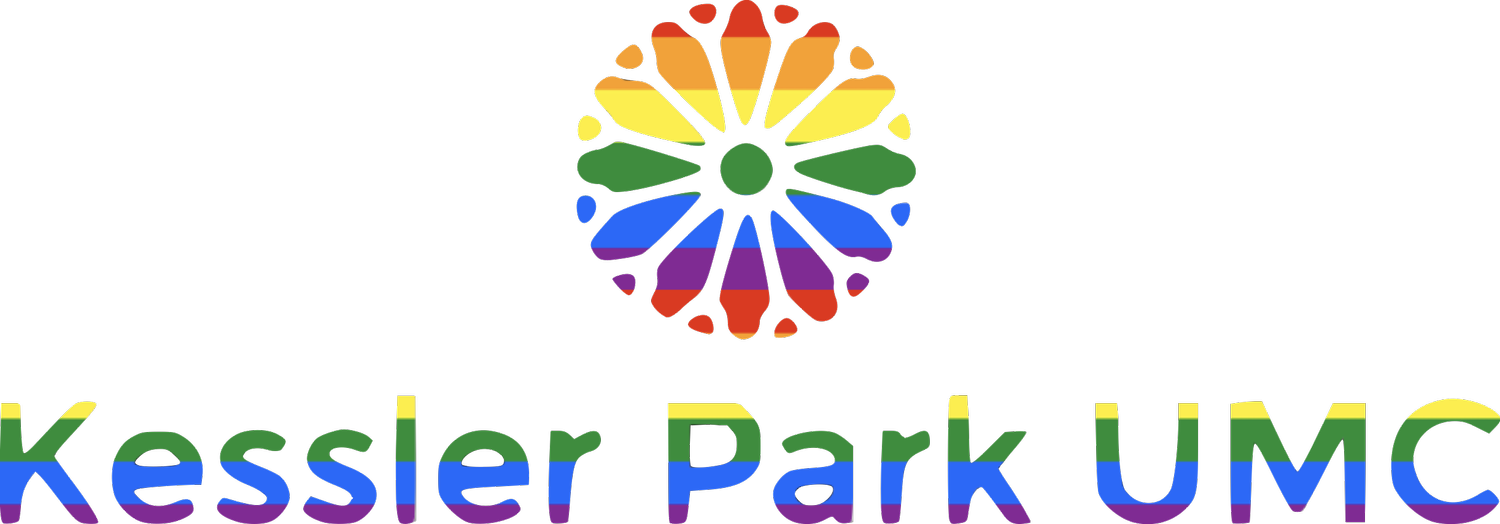A Very Different Egg
/by Rev. Kay Ash
As many of you know, we had to reschedule our Easter children’s activities this year because of heavy rains. Despite the rescheduled time slot to the following Saturday, the event blossomed in wonderful ways. Can there possibly be anything better than children and families running through our “looks like paradise” Kessler Park UMC campus bursting with giggles? Clearly, the Holy Spirit is moving in this place!
The Kessler Park UMC Easter Parade and Egg Hunt event has been going on long before my time. Traditionally, the parade featured a local fire truck, police presence, marching band, antique cars, king & queen, a giant bunny and lots of toddlers with tricked-out tricycles or wagons. The parade route followed a two block rectangular pattern throughout our neighborhood and usually lasted about 20 to 25 minutes. After the parade, there were age level egg hunts across our large property and finally, a picnic in Robert’s Forest with the Hamburger Man.
Most people are not aware, however, of the process required to prepare for the Easter event, particularly, the parade. To describe the process as complex is truly an understatement. So that traffic can be interrupted by the parade, which takes place on the public streets of our neighborhood, we must obtain a special events permit from the City of Dallas. Each year the permit process has grown increasingly complex. More than a dozen documents had to be filed, multiple support personnel paid and large numbers of neighbors had to be personally notified. It took several months to complete the necessary steps and the cost reached into four figures.
We finally got the necessary permit, but then, the weather happened.
That Thursday after Palm Sunday was a sad, sad day. Since heavy rains were predicted at 100% for the following Saturday, our event day, we had to cancel and reschedule for the Saturday before Easter. All of the moving parts came to a screeching halt. Our date specific special events permit was no longer valid. It was time to make lemonade out of soggy, rain-soaked lemons!
The following Saturday we put out tables of arts and crafts on the basketball court: you could decorate eggs with beans, or bling or yarn; you could paint with shaving crème or string beads into a cross. When the families arrived, something wonderful happened. Kids played, crafted and chatted while parents got caught up with their friends and neighbors. Our Easter event slowed down a little bit. I saw hugging, and picture taking, and neighbors complimenting each other’s children. I saw glue dripping, God-inspired works of art and little faces covered with melted Hersey’s kiss chocolate. In the mix of it all, one of our neighbors told me how proud she was of our church for flying the rainbow flags next to our yard sign. “All people are loved by God,” she said to me. As I gleefully agreed, I realized that the Kingdom of God was bubbling up right then and there onto our “looks like paradise” Kessler Park UMC campus. More than anything else, our annual Easter event has to provide time and opportunity for our neighbors to connect and to love each other, all to the glory of God.
It may take us some time to successfully reimagine what our annual Kessler Park UMC Easter time activities will look like over the next few years. With that said, it will be exciting to find new connections between ourselves and our neighbors. The Holy Spirit is surely on the move!



